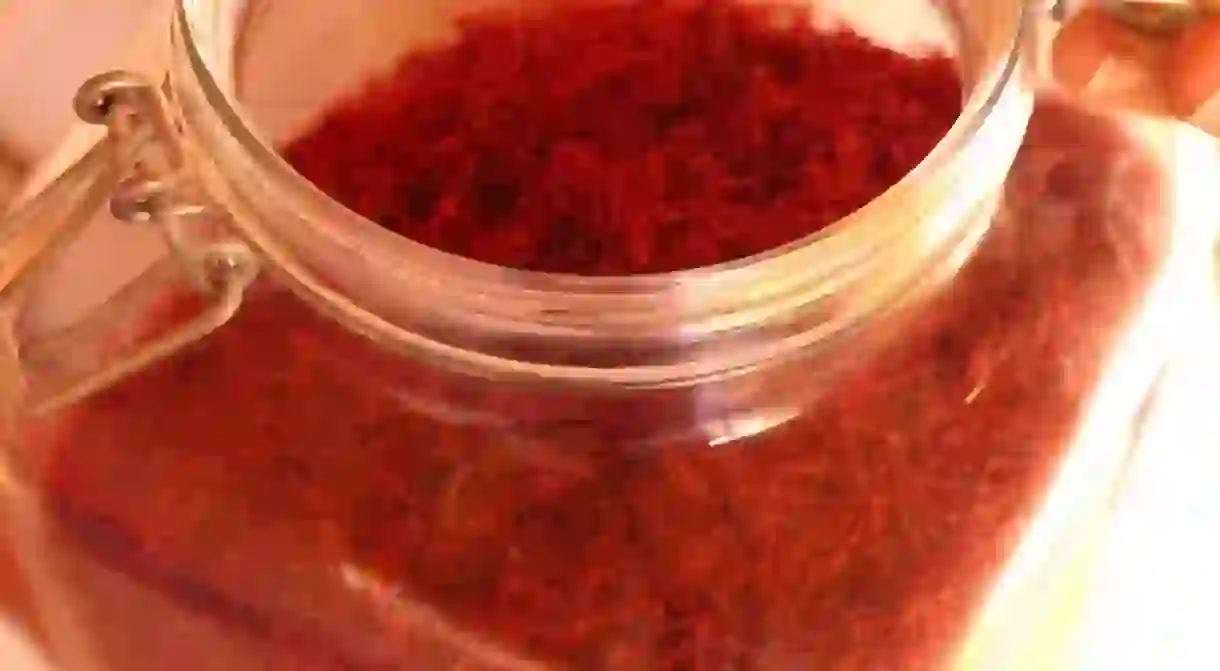An Introduction To Saffron Harvest In Morocco

Saffron is one of Morocco’s leading exports. Although it’s grown in only a few regions throughout the small North African kingdom, it’s sold in the various spice markets throughout. Taliouine, a little mountain village in the south of Morocco, and the Ourika Valley at the foot of the Atlas Mountains near Marrakech are two well-known regions where the saffron crocuses grow. And in the weeks to come, the harvest will begin. With purple crocuses lining the fields in Tnine Ourika at the foot of the Atlas Mountains, this labor-intensive process is a sight to see.
Typically lasting three weeks in late October or early November, women gather early in the morning to complete the day’s harvest before the sunlight hits and the flowers begin to bloom. This protects the stigma – which provides the saffron thread – from any dust entering along with the light, which may result in damaging the fragile flower. And it all kicks off around 4AM and finishes by about 9AM – just in time for a tea break during a visit to Saffron Gardens near Marrakech.
Once picked, the separation process begins. The women gather around small wooden tables to separate the red stigma from the purple crocus flower – a true sight for the eyes!
But it’s not all work. The women gather daily for the duration of the harvest, collecting flowers and then gathering around the table to collect the stigma, all while sharing a few laughs and enjoying a social time.
Then once they’ve completed the separation process, the drying process can begin immediately.
Given the endless blue skies in Morocco, this stigma may be sun dried, however this results in a heavier product when purchasing by weight, as the product does not lose much of its natural weight. Drying the product by machine ensures the saffron does not come into contact with dust and therefore significantly reduces the product’s weight.

Once dry, the product is stored in airtight jars in a cool place until it is ready for sale. At Saffron Gardens, 115 stigma are required to produce one gram of saffron, so it’s no wonder the spice is one of the most expensive in the world. But with antiseptic and anti-oxidant properties, anyone who has tasted real saffron will agree it’s worth paying the price.

The process, however, is heavily dependent on the weather. A sudden cold snap can significantly reduce the amount of saffron collected and available for sale, thus increasing the process accordingly.
With saffron widely available in the souks, one has to be sure they know what to look for to ensure the highest quality saffron. When wet, the saffron should turn yellow. Any other colour could indicate that other parts of the flower were added to the mix to increase the weight, but decrease the quality. Machine dried saffron will be a bolder red, while the sun-dried variety will be lighter. Both are quality products, it’s just that saffron dried in the sun doesn’t lose as much moisture.
http://instagram.com/p/BLgf_l5Duxc/?tagged=saffron
http://instagram.com/p/BLgZUy1jP5m/?tagged=saffron













